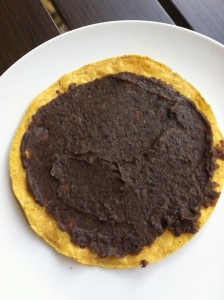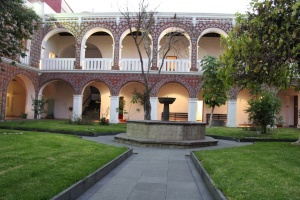‘Frijoles’, I said decisively to Barbara. It means refried beans. We were mixing polvo de mármol grains with calidra slurry to make the first layer of stucco, and Barbara looked confused. Perhaps I had made a mistake with my Spanish? Then, the penny dropped and we began down the route of pure workshop understanding, where non-verbal communication and food metaphors are more useful than lengthy explanation.
We had begun work on a different type of stucco technique, that which was used to create the ornament and flourishes seen on the Casa del Alfeñique and other such buildings. Calidra, or cal, was harvested from the bottom of a vat, the water covering the mixture ensuring that it does not have contact with, and react with, the air. This slurry was then mixed with cal powder and polvo de mármol to create the spreadable granular paste, henceforth known as ‘frijoles’.
Tiles had been prepared, by soaking them in water and draining them. ‘Wet on wet’ and ‘natural y natural’ were our mantras as we worked, ensuring a strong bond, or ‘happy marriage’ between materials. The frijole mixture was spread firmly and evenly on the surface of the tiles, and left to set. Areas requiring more build up were scored to make them rough enough to receive the next layer of stucco with conviction.
During this session we also applied blanco de España (a mixture of talcum powder and rabbit glue) to the caña framework we had previously prepared. Shredded cane pulp was made damp, mixed with the blanco de España and applied firmly to the structure, to bulk out the form and create the requisite surface for the next layer of pure stucco.
Exiting the conservation studio through the beautiful ex-convent courtyard, I was reminded of what a fine place this was to work, the perfect setting in which to learn these historic techniques. I wondered silently about all the nuns who had walked there before me.






